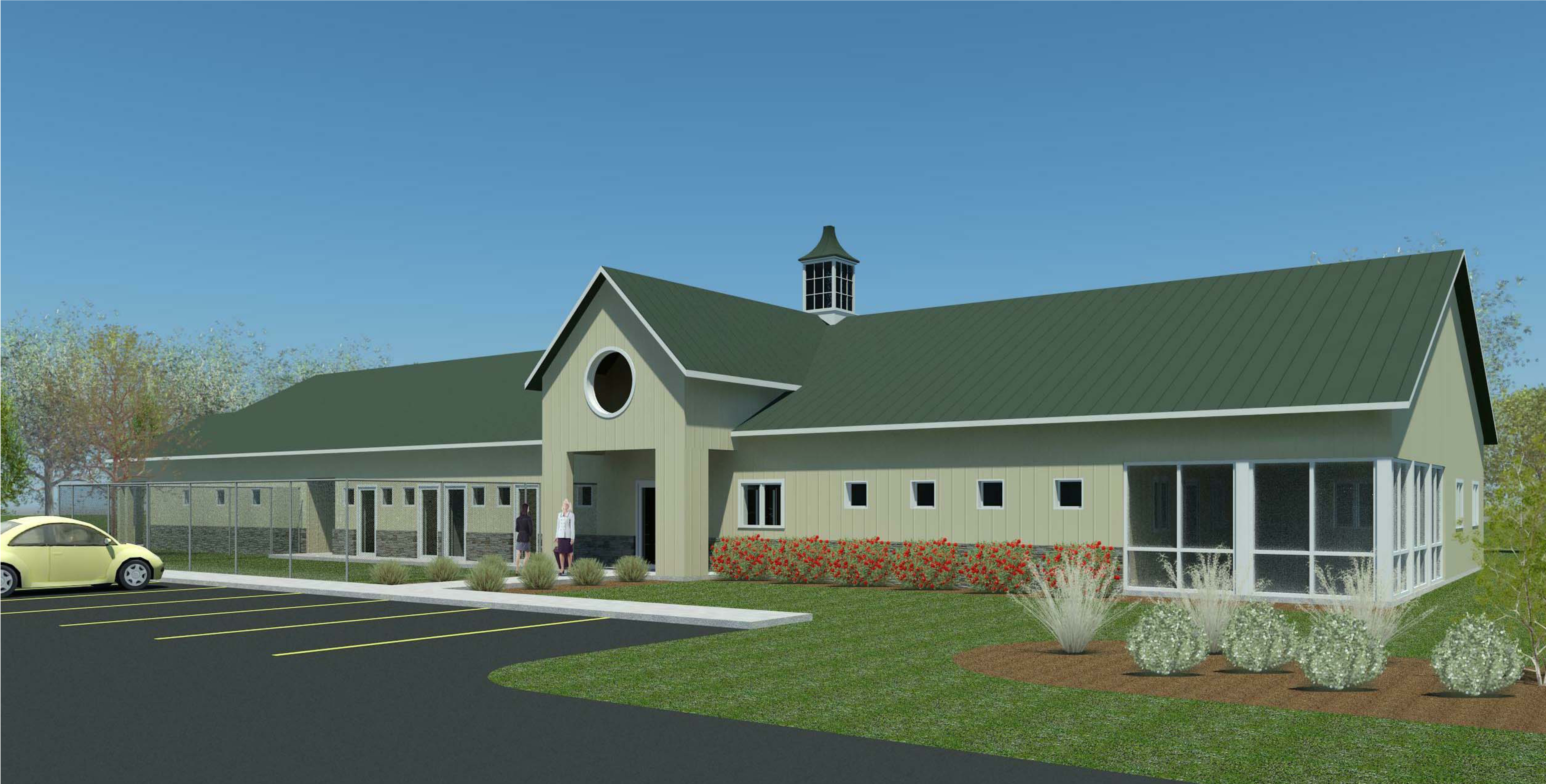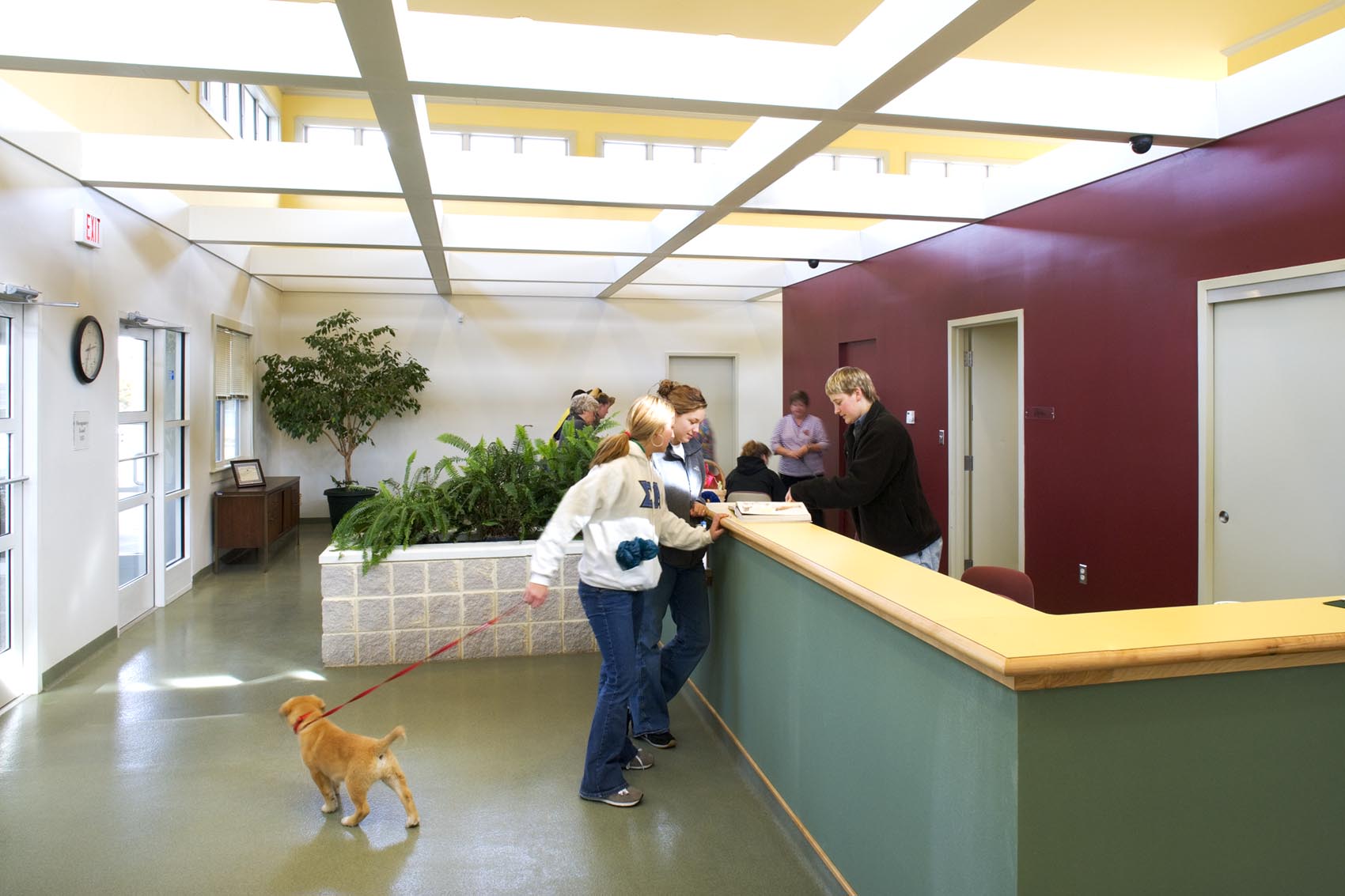We are proud to announce the completion of the Forsyth County, Georgia Animal Shelter!
Forsyth County, Georgia operated its animal shelter for many years via a contract with a local veterinarian who had, at one time, sufficient space to accommodate their needs. Due to rapid growth during the last decade, the arrangement became stressed and the County was implored by the local SPCA and various rescue groups to build a new shelter.
Shelterplanners teamed with local design group RKS Green Consultants (www.rksgreen.com) to design the new shelter. Shelterplanners led the County’s “Shelter Committee” through a complex shelter sizing and programming study process that ultimately achieved consensus leading to shelter planning accomodating the diverse interests of all the groups.
Completion of the sizing and programming was quickly followed by the submittal of a schematic design that met the County’s needs and satisfied everyone's concerns.
After only three months of design, the project was bid within the propsed budget and construction began March 20, 2013. The ribbon cutting ceremony and grand opening was held on Augst 22. 2014.
Animal Control's operatons are separated from the Adoption Center permitting ACO's to perform their duties concomittently with ongoing Adoption Services. The shelter has experienced an immediate increase in its public visits and adoptions.
A veterinary clinic- spay/neuter suite is included as well as education/training space shared by both Animal Control and the Adoption Center. 98 Dogs are housed in a variety of indoor-outdoor kennel sizes and 96 cats are provided the latest in accommodations including portaled “condos” and “apartments” permitting communal living.
Beacuse of anticipated growth Shelterplanners included master planning that will enable the County to respond with planned additions as conditions warrant with little impact on the ongoing operation of Animal Control and the Adoption Center.
Shelterplanners teamed with local design group RKS Green Consultants to design the new shelter. Shelterplanners led the County’s “Shelter Committee” through a complex shelter sizing and programming study process that ultimately achieved consensus leading to shelter planning accomodating the diverse interests of all the groups.
 September 10, 2014
September 10, 2014 






